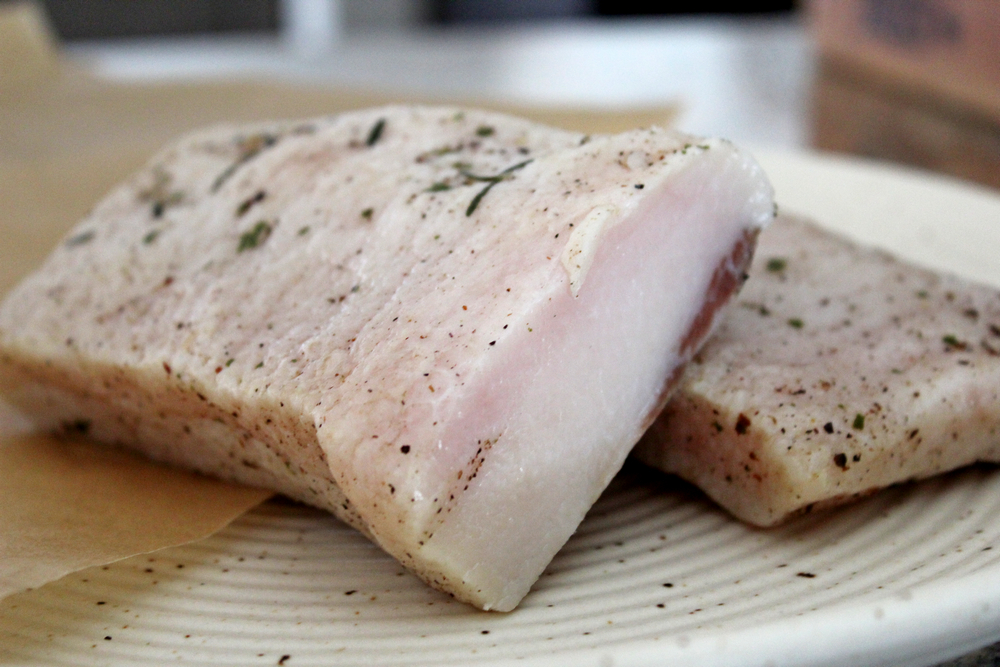
Man is this good. Like very very good. It’s another one of those posts here that did not start as a planned blog post, hence the no preparation pictures. I wish I had taken some. Oh well, maybe next time since I am sure there will be a next time. After months in the cure, I sliced and tasted the Lardo and it was so amazing I had to post about it. What was once just a chunk of pork fat became -with the application of salt, herbs and time- a luscious, nutty, savory piece of Salumi.
Let me back up a bit. I’ve mentioned a few times that I buy most of my awesome pork from a local farmer who really raises some tasty pigs at Yonder Way Farm. A while back some of the shoulder pieces I bought had a thicker than normal layer of perfect white fat on them. Usually I save that up, freeze it and use it for sausage. These were too nice and perfect though. So, I decided to keep them whole and invest some time to make Lardo. This preparation is a classic method of preserving and enjoying pork back fat from the Lombardy region of Italy, especially the town of Colonnata. The “real” Lardo from there is labeled as the only authentic “Lardo di Colonnata“. It is salted and kept in beautiful boxes made from marble harvested in those same Lombardy hills. I have never had this real thing and truth be told I did not have a ton of expectation for my humble cured fat back.
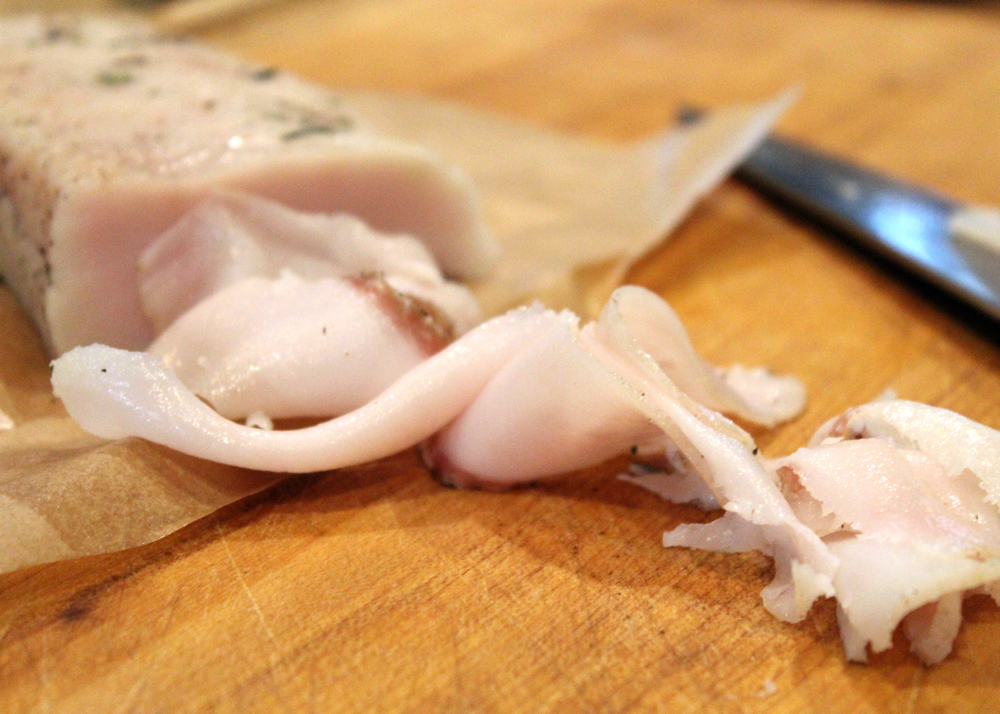
Still, I figured what do I have to lose. I already have a good bit of frozen fat for sausage, so I gave Lardo a shot. I used the recipe from Michael Ruhlman’s Salumi book as a template but it really is more of a process than a recipe. I chopped up fresh rosemary leaves, crushed some juniper and a good bit of black pepper and mixed that with kosher salt. Since this is pretty much 99% fat and has little to no muscle fibers the salt percentage is not that important to measure out. Usually when I make Coppa, Bresaola or Lomo or any other cured whole muscle the salt should be about 3% of the weight of the meat. Too little and the meat might spoil or not taste well-seasoned. Too much and it will be way too salty and not pleasant.
The fatback on the other hand does not absorb the salt nearly as readily as the muscle fibers and has very little water content. So, what we do here is just pack the fat in the salt and spice mixture and ensure there is a thick layer of salt all around. The best way to do this is to just put it in a Foodsaver bag and vacuum seal it. The real enemy of this process is light. Keep it away from light while it cures and to store it after it is cured (I wrapped mine well in parchment paper to store in the fridge). After vacuum packing in the salt cure I put it in the back of a fridge drawer for about 4 months to cure. Yes, four months. This is easy Salumi but it is S…L…O..W. When time is up, I took it out of the salt, rinsed it well and patted it dry very well. I sliced a few very thin sliced right away and tasted. It was just awesome. The flavor was nutty, seasoned perfectly with salt and all those herbs and spices. Everything came through but the flavor of the pork was all there and shone through. It’s tough to describe how good this damn stuff is and how surprised I was by that. The texture also was not greasy or soft but had a delightful firm “crunch”. Even visually it is arresting, just look at that lovely pink hue.
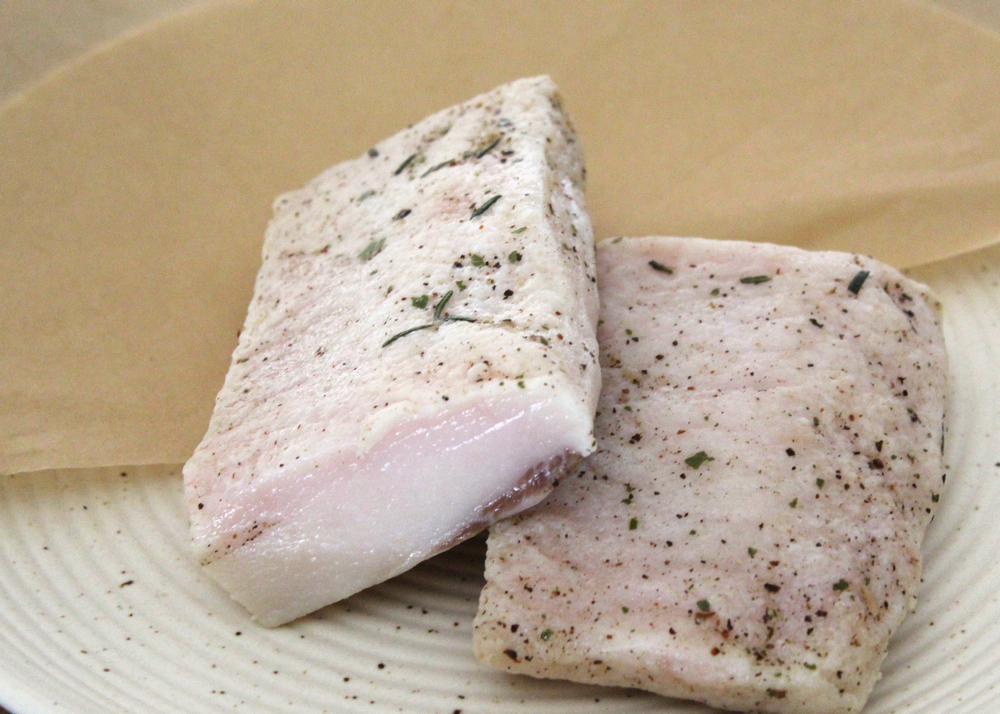
How to serve this? Well, I ate a good bit as described above. Sliced razor thin. It is really good if allowed to sit for a moment on a good piece of warm toasted bread, drizzled with a bit of grassy olive oil and topped with a piece of arugula. Next level up? Pizza “Bianca”. This is my homemade pizza dough, baked naked and then as soon as it comes out of the oven covered with those thin thin slices of goodness. This one is especially good with a few dollops of ricotta, perhaps not “traditional” but taste in my house always wins over tradition!
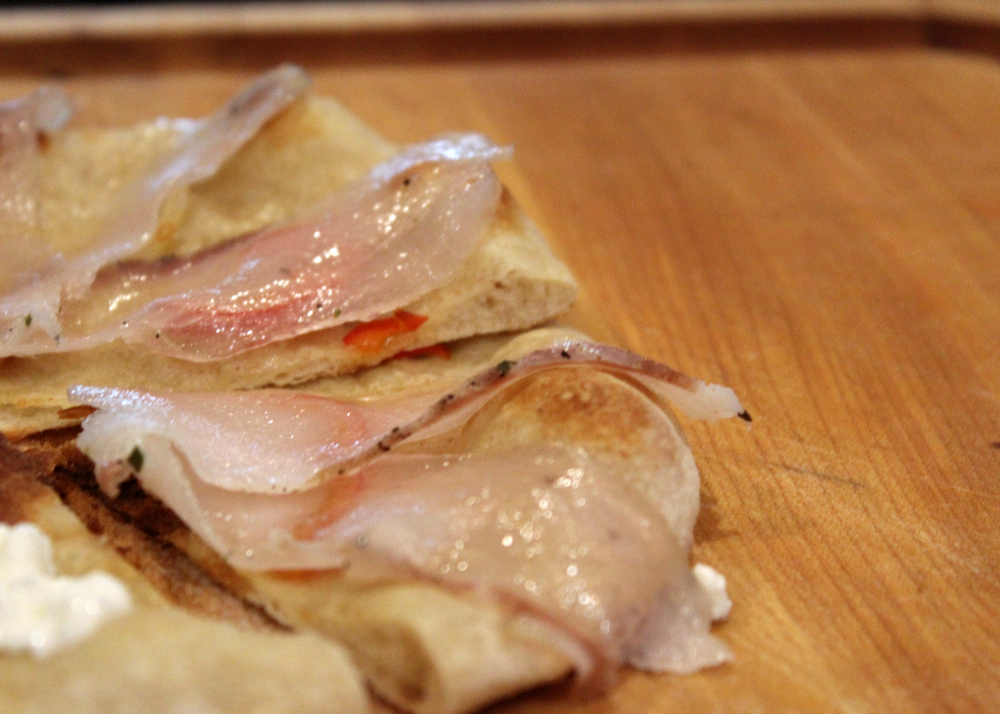
…Or just on a pizza with other awesome toppings
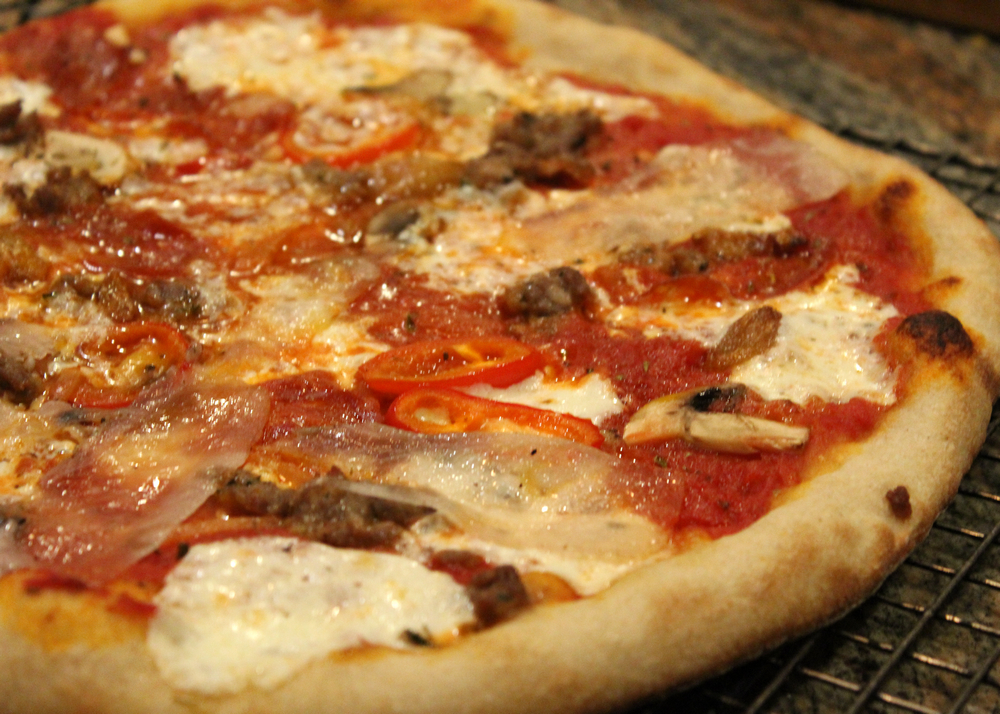
Still, I wanted to make a dish that uses more of the Lardo.
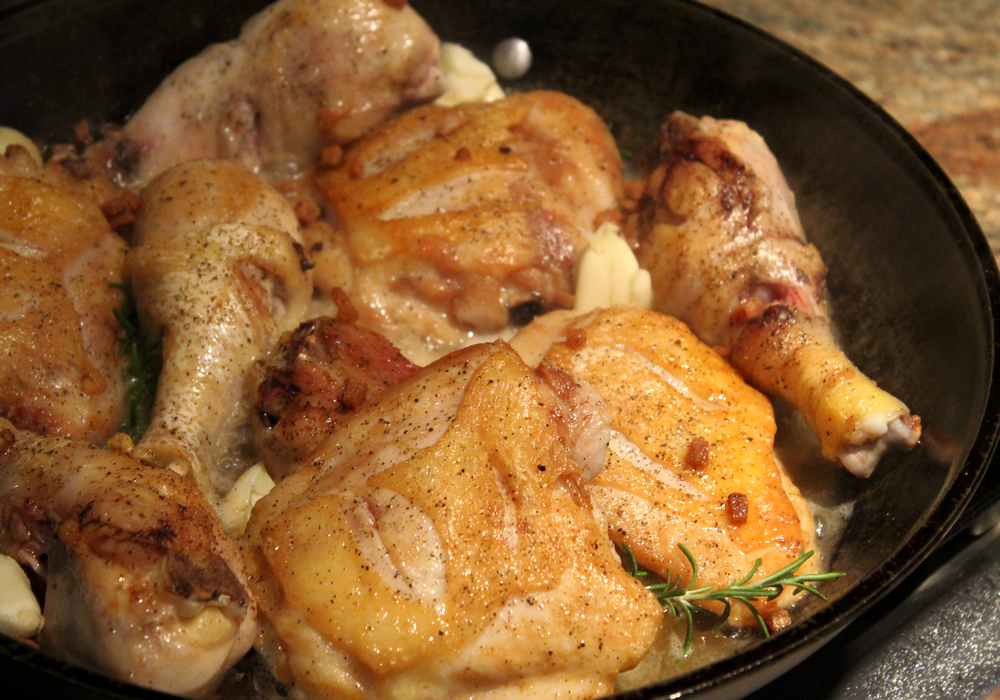
I recalled a recipe I had seen in Zachary Pelaccio’s book Eat with Your Hands that combines Lardo with chicken thighs and cape gooseberries. That was a good idea! It starts of by chopping the Lardo pieces into small cubes and cooking them down until crispy. I took those out of the pan and used the fat to sear the chicken, then braising it with my local version of gooseberries, aka tomatillos. I added the crisped Lardo pieces and let the chicken cook until tender and the tomatillos are burst making a thick sauce. A simple and delicious dish that we served with pasta and a glass of wine.
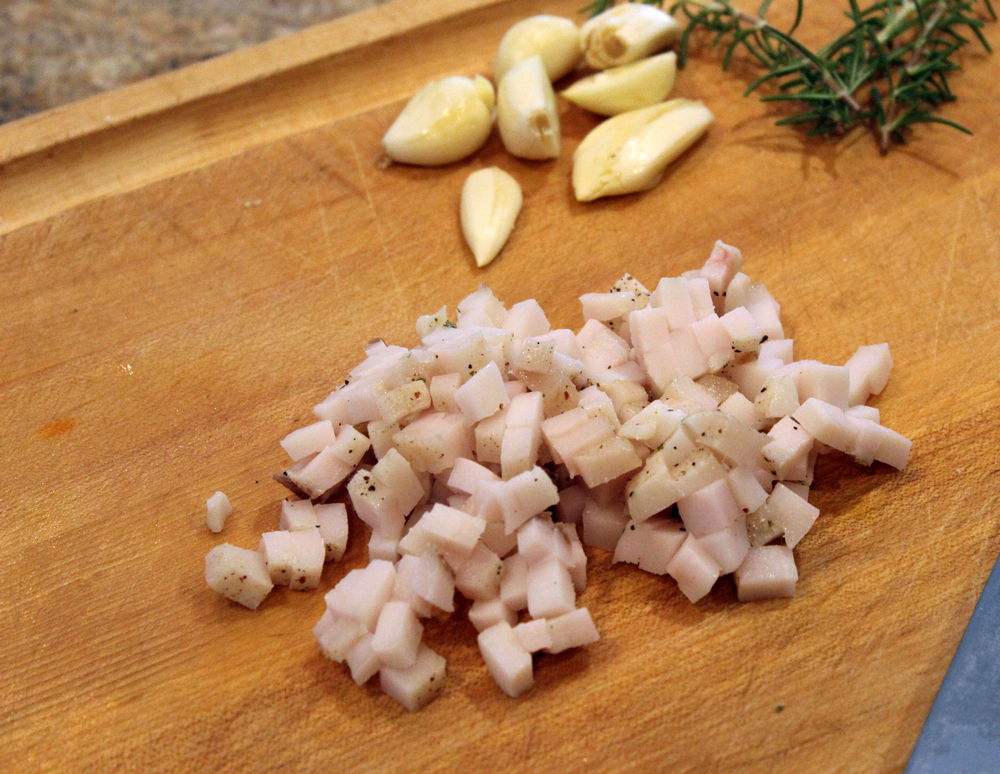
Lardo as is the case with most whole muscle (or fat) salumi is really about the pig. I have no doubt that if this was done with commercial factory pork it would not be anywhere as good and most likely the Lardo especially would be shitty. Now that I know how amazing this salted, seasoned pork back fat can be I will be looking forward to the next piece of free range pork with a thick layer of snow white fat.
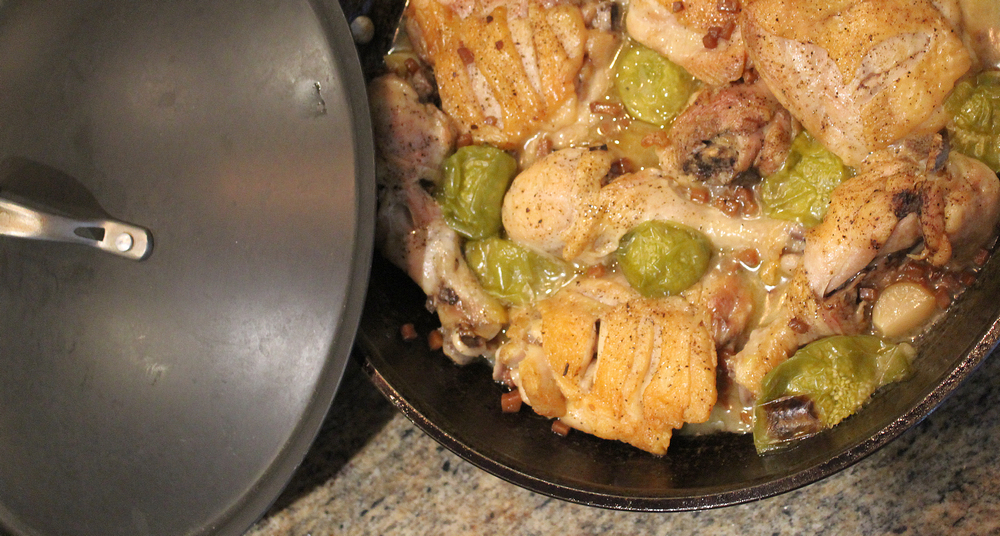

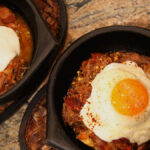
I regularly make pancetta and have sine guanciale once. It is so much better than store-bought that I am not surprised about your similar result with lardo.